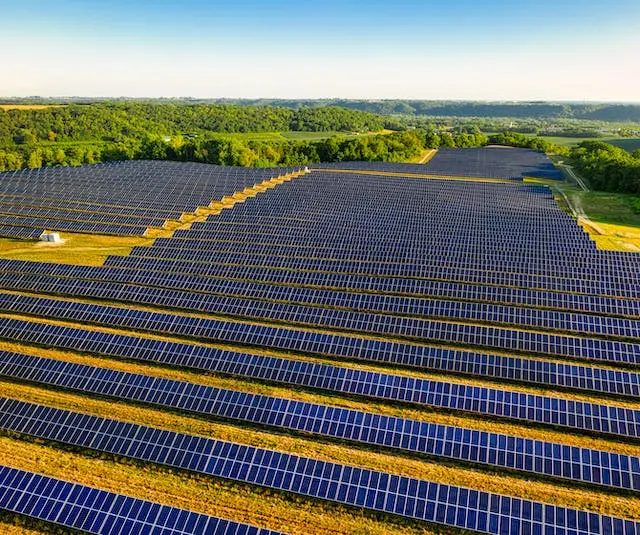
So, you’ve been considering making the switch to solar energy for your home, but you’re not quite sure where to start.
Imagine being able to power your home with the sun’s energy and even receive grants to help cover the costs. It sounds too good to be true, right? Well, it’s not.
There are various residential solar panel grants available to homeowners, and this guide is going to walk you through everything you need to know to take advantage of them.
From understanding the eligibility requirements to maximizing the benefits, this comprehensive resource has got you covered.
So, are you ready to uncover how you can unlock free solar for your home?
Key Takeaways
- Solar panel grants provide financial assistance for homeowners to transition to solar energy.
- Eligibility for grants requires property ownership, occupancy, and meeting technical standards.
- Navigating the application process successfully involves gathering all necessary materials and seeking professional assistance.
- Maximizing grant benefits can be achieved by combining the homeowner rebate with other incentives, such as federal tax credits and state-based incentives.
Understanding Solar Panel Grants
If you’re considering installing solar panels, understanding solar panel grants can help you take advantage of financial incentives that make the transition to solar energy more affordable.
The government provides various funding opportunities to support solar panel installation, making it an attractive option for homeowners.
One such incentive is the homeowner rebate, offering up to $3700 to eligible applicants. This rebate aims to offset the initial costs associated with installing solar panels, making it more accessible for homeowners to invest in renewable energy.
Additionally, the Small-scale Technology Certificate (STC) rebate provides financial benefits to homeowners who install solar panels. Understanding the eligibility criteria and application process for these grants is crucial for maximizing the financial assistance available.
By familiarizing yourself with the step-by-step guide for claiming the homeowner rebate, you can navigate the process with confidence.
Moreover, exploring other solar incentives such as interest-free loans and energy-saving packages can further enhance the financial feasibility of solar panel installation.
Government funding plays a pivotal role in promoting sustainable energy solutions, and by leveraging these grants, you can make significant strides towards a more environmentally friendly and cost-effective energy system.
Different Types of Solar Panel Grants in Australia
| Grant Name | Description | Eligibility | Grant Amount | Application Deadline |
|---|---|---|---|---|
| Clean Energy Regulator | The Clean Energy Regulator offers the Small-scale Renewable Energy Scheme (SRES) which provides financial incentives for individuals, businesses, and community organizations to install small-scale renewable energy systems, including solar panels. | Australian residents and businesses | Varies based on system capacity | Ongoing |
| Australian Renewable Energy Agency (ARENA) | ARENA offers various grants and funding programs to support research, development, and deployment of renewable energy projects, including solar panel installations. Some of the grant programs include the Advancing Renewables Program and the Regional Australia’s Renewables Program. | Individuals, businesses, and organizations engaged in renewable energy projects in Australia. | Varies based on program | Varies |
| State and Territory Grants | Each state and territory in Australia may offer grants and incentives for solar panel installations. These grants vary depending on the region and may include rebates, feed-in tariffs, or low-interest loans. Examples of state-based grants include the Solar Homes Program in Victoria and the Solar for Low-Income Households trial in New South Wales. | Australian residents and businesses within the specific state or territory | Varies based on the program | Varies |
| Community Energy Efficiency Program (CEEP) | The CEEP provides funding for community organizations to improve energy efficiency and install renewable energy systems, including solar panels. The program aims to reduce energy costs, lower greenhouse gas emissions, and support local communities. | Not-for-profit community organizations in Australia | Up to $12 million | Closed |
| Solar Communities Program | The Solar Communities Program provides funding for community organizations to install solar panels and battery storage systems. The program aims to reduce electricity costs and support energy resilience in regional and remote communities. | Community organizations in eligible locations across Australia | Up to $12,500 | Closed |
Eligibility Requirements for Grants
To determine if you’re eligible for solar panel grants, homeowners must meet specific criteria related to property ownership and location. Here are the key eligibility requirements for grants:
- Property Ownership and Occupancy: Homeowners must own and occupy the property to qualify for the rebate. This means that renters or those who don’t live in the home they own may not be eligible for the grant.
- Location: The property must be located in a specified region to be eligible for the homeowner rebate. Different grant programs have different geographical requirements, so it’s important to check if your location qualifies.
- Technical Standards: The solar installation must meet certain technical standards to qualify for the rebate. This may include the type and efficiency of the solar panels, as well as the overall quality of the installation.
Meeting these criteria is essential to qualify for solar panel grants. Additionally, understanding the application requirements and ensuring compliance with grant eligibility criteria will increase your chances of accessing financial support for your solar panel installation.
Navigating the Application Process
Once you’ve confirmed your eligibility for solar panel grants, the next step is to navigate through the application process with ease and confidence. Start by gathering all the required materials for the application. This may include proof of income, property ownership documents, and your most recent utility bills. Make sure to have all necessary documents prepared and organized before beginning the application to streamline the process.
Common application mistakes often include incomplete forms, missing documentation, or errors in the application itself. To avoid these pitfalls, carefully review the application requirements and double-check all information before submission. Additionally, consider seeking assistance from solar energy professionals or grant specialists to ensure your application is error-free.
To increase your chances of success, follow these tips: familiarize yourself with the specific requirements of the grant program, provide accurate and complete information, and submit your application well before the deadline. Being proactive and thorough in your application process will greatly improve your chances of securing a solar panel grant for your residential property.
State-Specific Solar Incentives
Wondering what solar incentives are available in your state to help you save on residential solar panel installations? State-specific solar incentives can offer a range of financial benefits to homeowners looking to adopt solar energy systems.
Here are a few types of solar incentives that may be available in your state:
- Rebates: Many states offer cash rebates to homeowners who install solar panels, providing an upfront financial benefit to offset the initial costs of the system.
- Tax Credits: State tax credits can significantly reduce the overall cost of a residential solar installation by allowing homeowners to subtract a portion of the system’s cost from their state tax liability.
- Grants: Some states provide grants to support the implementation of solar energy systems, offering direct financial assistance for homeowners looking to adopt solar power.
Maximizing Grant Benefits
Maximizing grant benefits can greatly reduce the overall cost of residential solar panel installations, providing homeowners with substantial financial advantages. By combining the Homeowner Rebate with other incentives such as federal tax credits, state-based incentives, and utility company rebates, homeowners can maximize their financial benefits.
This table provides a breakdown of potential financial benefits available to homeowners:
|
Grant Name
|
Financial Benefit
|
|---|---|
|
Homeowner Rebate
|
$3,700
|
|
Solar Panel Rebate
|
Up to $1,400
|
|
Federal Tax Credits
|
Up to 26% of system cost
|
|
Utility Company Rebates
|
Varies by provider
|
To make the most of these benefits, homeowners should research and plan, obtain quotes, determine eligibility, choose a solar system, and sign a contract with their chosen solar installation company to claim the homeowner rebate.
Additionally, homeowners can benefit from state-based incentives, feed-in tariffs, low-interest solar loans, and grants, further maximizing their financial advantages. By taking advantage of these opportunities, homeowners can significantly reduce the upfront costs of installing solar panels and enjoy long-term savings on their energy bills.
Frequently Asked Questions
Is Free Solar Free?
Free solar may not be entirely free. There could be hidden costs associated with the installation process. It’s important to carefully review all terms and conditions to understand the full financial implications before committing.
What Is the Solar Rebate in Australia 2023?
In 2023, Australia will offer a solar rebate that provides financial benefits for installing solar panels. The rebate, known as the Small-scale Technology Certificate (STC), encourages homeowners to adopt renewable energy systems and can maximize solar panel benefits.
What Is the $7000 Solar Rebate Nsw?
The $7000 solar rebate in NSW is a valuable incentive offered by the Australian government to promote residential solar panel installation. It can significantly reduce the cost of going solar, making it more accessible for homeowners.
How Many Panels Does a 6.6 Kw Solar System Have?
A 6.6 kW solar system generally has around 18-20 solar panels. The panel count can vary based on wattage, efficiency, and available space. Factors like shading and orientation should be considered for optimal system capacity.
Conclusion
In conclusion, it is important to consider that a concise conclusion can vary depending on the context and purpose of the discussion. However, a well-crafted conclusion should effectively summarize the main points, provide a clear final thought or recommendation, and leave a lasting impact on the reader or listener.



